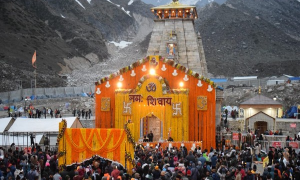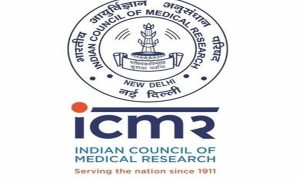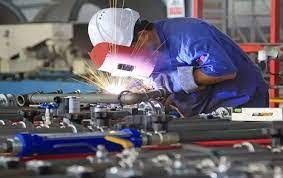Sri Lanka is facing an economic and political crisis, with protesters taking to the streets in defiance of curfews and cabinet ministers resigning en masse.
The island nation is in turmoil amidst crippling inflation due to the worst economic crisis the country has ever seen since it gained independence in 1948.
What has caused this economic crisis?
The crisis perhaps is not sudden, but immediate, a culmination of circumstances and government mismanagement.
The Sri Lankan government over the last decade borrowed vast sums of money from foreign lenders to fund public services, which has landed the nation in a debt trap when hit by disasters, both natural, such as heavy monsoons, to man-made, including a government ban on chemical fertilizers that crippled farmers’ harvests.
In addition to this, a severe shortage of foreign currency has left the country unable to pay for essential imports, including fuel, leading to debilitating power cuts that lasted up to 13 hours.
The hammer falls on Citizenry; they take it to streets
As a result, citizens of Sri Lanka have been facing the brunt of shortages and soaring inflation. The crisis has trapped the daily lives of Sri Lankans into a vicious cycle of waiting in lines for basic goods, skyrocketing prices of basic amenities, shortage of fuel and a defunct administration.
Late in March, the agitated citizenry took to the streets in protests and demanded accountability from the government. Massive protests took place on 31st March when outraged citizens hurled bricks and started fires outside the President’s private residence.
As a result, a 36-hour curfew was put in the national capital Colombo, and President Rajapaksa declared a nationwide public emergency on April 1, giving authorities powers to detain people without a warrant. The government also blocked social media platforms which was hugely condemned by various in the administration and those on protest.
Despite the Nationwide public emergency protests went ahead the next day in defiance of the curfew, continuing till date.
On April 5, President Gotabaya Rajapaksa revoked the state of Emergency with immediate effect.
Cabinet in turmoil
The entire cabinet of the Sri Lankan government was effectively dissolved on April 3 due to mass resignations by several Ministers. President Rajapaksa tried to reshuffle the Cabinet in an attempt to keep the country functioning until a full cabinet is appointed, though the reshuffle failed to stop further desertions.
“The current crisis is a result of several economic factors and global developments,” the Sri Lankan President said in a statement appealing that “as one of the leading democratic countries in Asia, solutions should be found to this within a democratic framework.”
Crisis Management; India sends help to Sri Lanka
Sri Lanka now seeks financial support from the International Monetary Fund and its regional powers, including India, for crisis management.
A consignment of 40,000 MT of diesel under Indian assistance through a Line of Credit of $500 mn was handed over by the High Commissioner of India to Sri Lankan Energy Minister Gamini Lokuge in Colombo on 2nd April.
Earlier in January, India had confirmed a $400 million currency swap with Sri Lanka while deferring another $500 million due for settlement to the Asian Clearing Union (ACU).
India continues to provide fuel and goods assistance to the crisis-hit nation as it grapples to bring the situation under control.




























 WhatsApp us
WhatsApp us
Pingback: แทงหวย
Pingback: most popular magic mushroom strains
Pingback: see this website
Pingback: buy viagra
Pingback: ดูหนังออนไลน์ฟรี